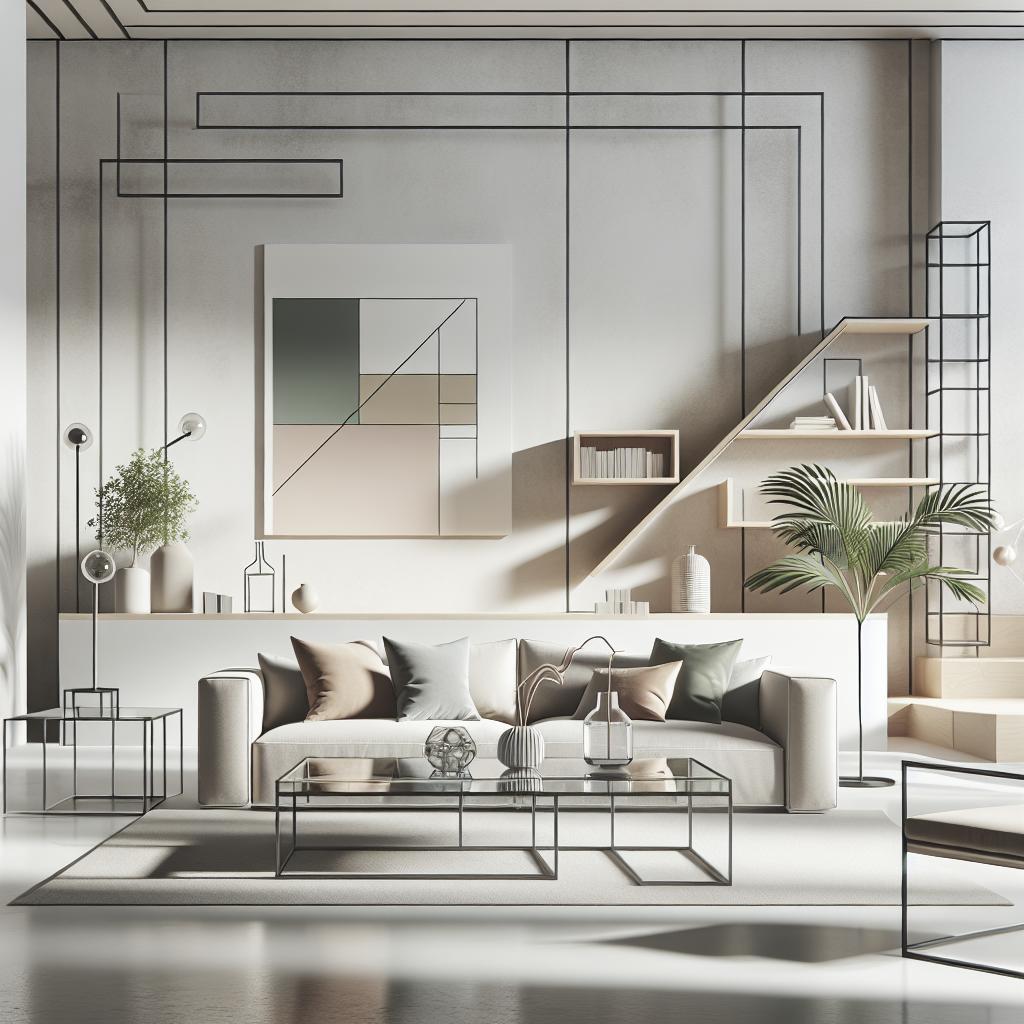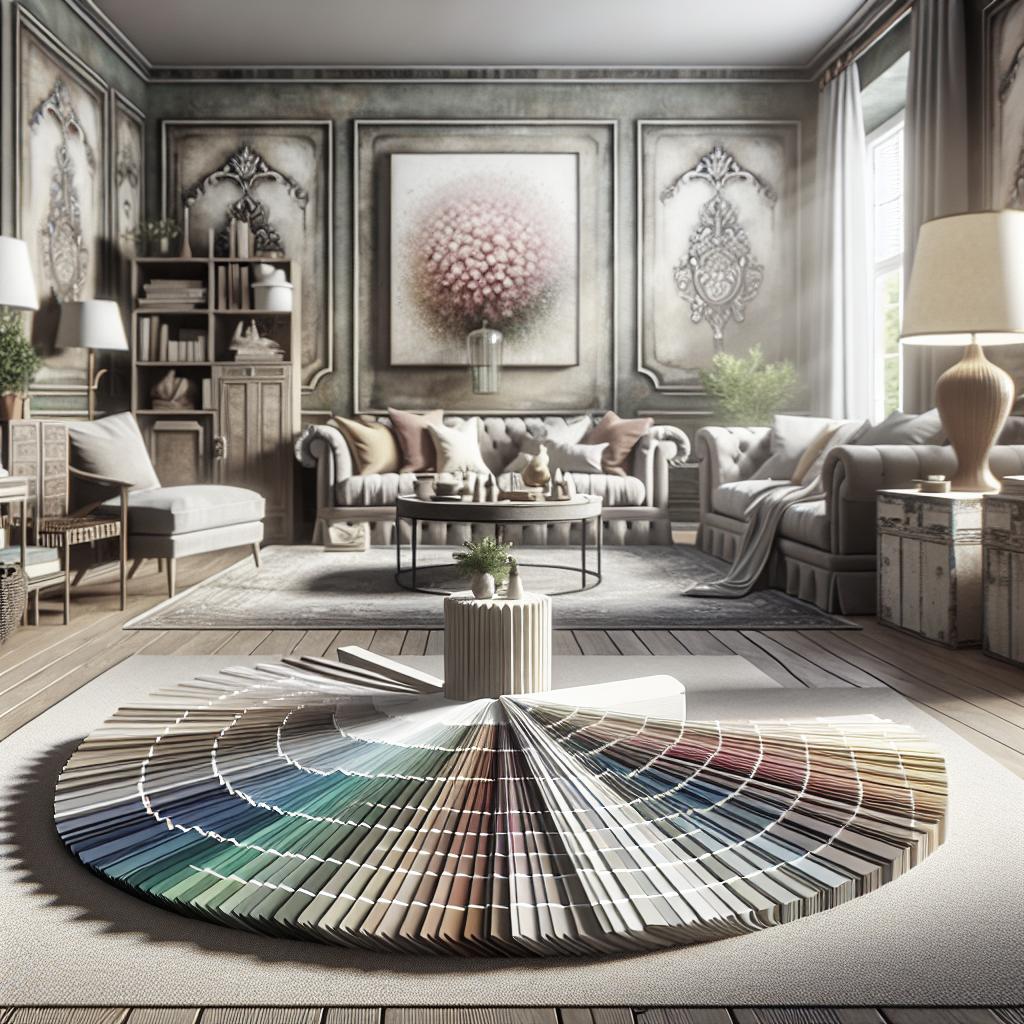When it comes to interior design, texture plays a vital role in bringing depth, warmth, and interest to a space. Whether through tactile sensations or visual complexity, the careful use of texture can transform an ordinary room into an extraordinary one. This article delves into the nuances of introducing texture into design spaces, exploring its impact, types, and strategic placements. From incorporating natural elements to playing with fabrics, textures offer endless possibilities. We’ll guide you through 12 innovative ways to add texture to any room, ensuring your spaces are as visually appealing as they are comfortable. Each section provides insight and inspiration for creating interiors that are inviting and sophisticated. — ## 📘 Key Takeaways Effective use of texture can dramatically enhance the feel and appearance of an interior design space. By thoughtfully incorporating diverse materials, patterns, and finishes, you can create environments that are both engaging and harmonious. This article provides a comprehensive guide to understanding and utilizing texture, ensuring your designs are not only visually compelling but also tactilely dynamic. ## What is Texture in Interior Design? Texture in interior design refers to the surface quality of materials and the perceived feel or appearance they have. It’s an essential element that adds dimensionality and interest to a space, even if it’s not overtly noticeable at first glance. Texture can bring life to an otherwise flat and uninspiring area by interacting with light and color to create contrast, harmony, and emphasis. Unlike colors or patterns that can be visually overwhelming, texture offers a subtler approach to transforming spaces. It can be achieved through fabrics, finishes, and natural materials that invoke a sensory reaction – whether it’s the warmth of wood, the softness of a plush carpet, or the cool touch of polished stone. Texture brings the added benefit of layering, which enhances the interest and complexity of a room. ## Understanding the Impact of Texture in Interior Design Texture influences the mood of a space significantly. It can create a cozy, inviting feeling in a room with rich and warm textures like wool, suede, or velvet. Conversely, sleek and smooth textures, such as glass or polished metals, can impart a modern and minimalist vibe. The right mix of textures fosters visual balance and interest, shaping the overall atmosphere. Moreover, texture can affect a space’s perceived size. Rough, heavy textures can make a room feel smaller and cozier, while smoother, lighter textures can make it feel larger and more open. Thus, understanding how different textures influence perception can guide the strategic design choices that cater to the desired spatial experience. ## Different Textures in Interior Design ### Tactile Texture in Interior Design Tactile texture pertains to the tangible feel of a surface when touched. It plays a crucial role in making a space feel more alive and interactive. When designing spaces, integrating tactile textures can add an element of discovery as visitors physically engage with their surroundings, from the coarse embrace of a woven basket to the silky feel of satin drapery. The use of tactile textures is often seen in upholstery choices, rugs, and wall treatments. By placing textured elements where physical touch is natural, you enhance the user experience, making interiors not only look good but feel good, too. ### Visual Texture in Interior Design Visual texture, on the other hand, refers to the perceived texture seen by the eyes without necessarily involving touch. It’s instrumental in adding complexity and depth, achieved through patterns and colors that evoke the sensation of texture. An intricate tile wall or a painterly abstract wallpaper can exemplify visual texture. The beauty of visual texture lies in its ability to transform with lighting and perspective. Patterns can create a sense of movement within a space, leading the eye and adding dynamism. To master visual texture is to understand how light, shadow, and pattern interact to enrich a room’s design narrative. ## Where Texture Can be Placed in Interior Design? Texture can be strategically placed in various components of a room, from walls and ceilings to floors and furniture. Walls can be adorned with wainscoting, textured paint, or paneling, infusing the space with unique character. Ceilings shouldn’t be overlooked; adding beams or coffered designs elevates architectural interest. Flooring is another vital aspect, where hardwoods, carpets, and area rugs contribute significantly to texture. Furniture and accessories such as cushions, curtains, and artworks present additional layers, each offering an opportunity to add personalized texture. Ultimately, understanding where to place texture depends on the design goals. A designer might choose to highlight specific architectural features or complement a room’s aesthetic theme. ## How to Use Texture in Interior Design? Using texture effectively requires a thoughtful approach. Begin by determining the mood and style of the space. Identify areas that would benefit from added depth or contrast. The aim is to achieve a harmonious balance that doesn’t overwhelm but rather complements the overall design. Incorporate a mix of textures, contrasting smooth with rough, soft with hard, and glossy with matte to create visual intrigue. Textures should not compete but rather support each other, working together to form a coherent look. Layering is key, bridging different textures to build complexity. Consider how textures align with the function of the space. In a cozy living room, opt for plush textiles and warm woods, while in a sleek office setting, integrate metals and glass. Tailoring texture to the function and purpose ensures both aesthetic and practical success. ## 12 Ways to Add Texture to Any Room ### 1. Bring Nature Inside with Plants & Flowers Incorporating natural elements like plants and flowers introduces organic texture and life into spaces. The variety in leaf shapes, colors, and arrangements can add refreshing diversity. Indoor plants not only enhance aesthetic appeal but also purify the air, contributing to a healthier environment. ### 2. Unlock the Potential of 3D Art in your Home Art isn’t confined to flat surfaces. Three-dimensional art pieces bring compelling focus points, offering tactile and visual dimensions. Consider sculptures or wall-mounted installations that cast shadows and interact with light, constantly changing the room’s dynamism. ### 3. Layer Your Home with Pillows and Throws Decorative pillows and throws are simple yet effective in adding layers of texture. Experiment with different fabrics like wool, linen, and silk, and play with varying sizes and shapes. These elements invite comfort and can be easily updated for different seasons or trends. ### 4. Elevate Your Home with Wooden Textures Wooden elements inherently add warmth and character. Whether through furniture, beams, or flooring, wood can be finished in myriad ways to complement any style. Reclaimed timber or live-edge pieces introduce unique textures, each with its own story. ### 5. Add a Statement With Architectural Features Architectural features such as crown molding, exposed brick walls, or built-in bookshelves offer natural texture. These elements can become focal points, adding grandeur and sophistication while enriching the textural experience. ### 6. Spice Up Your Home with Contrasting Fabrics Experiment with fabrics that contrast in weight and feel. Mixing heavy materials like velvet with light ones like cotton creates exciting juxtapositions. This contrast invites touch and keeps the eye moving across the space. ### 7. Design Beautiful Spaces with Tile and Masonry Tiles and masonry offer durable and decorative texture. From glossy subway tiles to rugged stone walls, these materials contribute significantly to the interior ambiance. Their versatility in patterns and finishes makes them a favorite in kitchens and bathrooms. ### 8. Add Decorative Flair to Any Room with Textual Wall Coverings Textured wallpapers and wall coverings are excellent for adding dimension without clashing with existing decor. Choose from embossed, metallic, or fabric-based options to create striking features that draw interest and complement the design style. ### 9. Transition Your Home with Layerable Textures Layering textures elevates depth and complexity. Overlapping rugs, combining textiles, or grouping decorative objects can be done to create visual narratives within spaces. This method invites exploration and adds a sense of curated style. ### 10. Make a Statement With Textured Furniture Furniture with textured finishes or materials like rattan, leather, or distressed wood provides a focal point in rooms. These pieces stand out, offering tactile contrast to surrounding elements and adding depth to the design scheme. ### 11. Play With Textured Home Accessories Accessories such as vases, frames, or light fixtures can introduce subtle yet impactful textures. These elements can be easily swapped or updated, allowing for continuous evolution of the room’s texture without significant investment. ### 12. Don’t Forget Lighting Lighting dramatically affects how texture is perceived. Incorporate light that highlights textured surfaces, creating shadows and enhancing depth. Use fixtures with textural elements like woven shades or metallic finishes to add to the sensory experience. ## Final Thoughts on Texture in Interior Design Exploring texture in interior design offers boundless opportunities to enrich spaces, introduce character, and influence emotional responses. By strategically selecting and layering a variety of textures, designers can craft interiors that are both highly functional and aesthetically pleasing. The interplay of tactile and visual textures results in environments that engage and inspire. Table summarizing ways to add texture: “`html
| Method | Description |
|---|---|
| Bring Nature Inside | Use plants and flowers to introduce organic texture. |
| 3D Art | Incorporate three-dimensional artwork for visual depth. |
| Pillows and Throws | Layer fabrics for comfort and texture. |
| Wooden Textures | Introduce warmth with wooden elements. |
| Architectural Features | Use molded details and structural elements to add interest. |
| Contrasting Fabrics | Mix heavy and light materials for tactile variety. |
| Tile and Masonry | Implement durable surface textures with tiles and stone. |
| Textual Wall Coverings | Add dimension with textured wallpapers. |
| Layerable Textures | Use layers to create depth and narrative in spaces. |
| Textured Furniture | Choose furniture pieces that offer visual and tactile interest. |
| Textured Accessories | Introduce texture through decorative items. |
| Lighting | Utilize light to enhance textured surfaces. |
“` Allow texture to guide your design process and unlock the potential of your interior spaces through creative incorporation.


